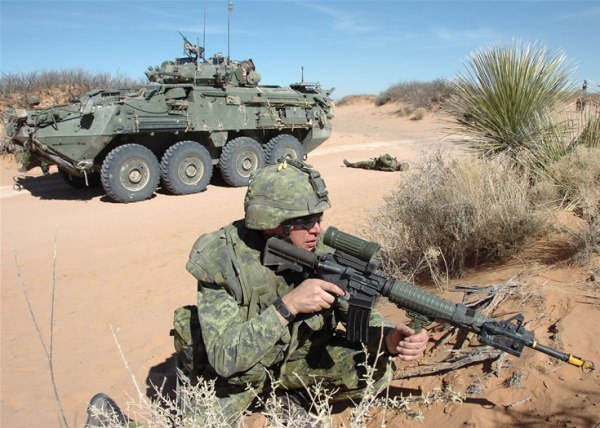Eight and a half years of operations in Afghanistan has proven beyond a shadow of a doubt that the old-fashioned, Euro-centric Cold War approach of “woodland” and “desert” pattern camouflage uniforms is ineffective and inappropriate.
Even the sophisticated new digital patterns like CADPAT and MARPAT have been hindered in their effectiveness by only being available in temperate woodland and desert variants.
A New Approach Needed
Soldiers (and particularly special operations troops who are always “the tip of the spear”) need camouflage uniforms that are optimised for operations in arid/semi-arid terrain. The semi-arid regions of the world are defined as transition zones between arid and sub-humid belts. Semi-arid regions are also defined as areas where precipitation is less than potential evaporation and are characterised by high temperatures (30-45oC) in the hottest months. (Syngentafoundation.org)
World Map 1: Arid, Semi-arid and non-agricultural areas (WDR 2008)
Arid and semi-arid areas account for one third of the earth’s surface land area. ICRISAT (1998) estimates that semi-arid areas, especially within the tropics, cover most parts of the developing nations in the world including Latin America, most parts of sub-Saharan Africa, a large portion of Eastern and Southern Africa and parts of India and South East Asia.
And guess what, it is these parts of the world which also account for the vast majority of the world’s current conflicts. The map below shows all current “hotspots” where armed conflict is claiming more than 1,000 lives per year – it speaks for itself.
World Map 2: Ongoing conflicts 2009 (kermanshahi wikipedia project)
So, when we look beyond Afghanistan we have to also recognise the fact that most future operations are likely to take place in the arid and semi-arid regions of the world. Furthermore, the greatest likelihood is that such forces will be deployed on so-called “low intensity operations” – a term coined by British General Sir Frank Kitson – who saw active service during the Mau Mau uprising in Kenya, the Malayan Emergency and Northern Ireland.
Perhaps nothing is more basic, all-pervasive, or significant to a soldier than the uniform he or she wears – and particularly if that’s a combat uniform that doesn’t seem to be up to the job it needs to do. To illustrate the point, there is a great line in the film “A Bridge Too Far” when Colonel Frost and his men first secure a foothold on the bridge at Arnhem: there in the heart of an urban landscape Col. Frost turns to his O Group and – taking in their Denison smocks and scrim-covered helmets – says, “You know chaps, its just occurred to me that we’re wearing entirely the wrong camouflage.” And he’s not the only one…
A Global Fashion Trend?
Multi-terrain camouflage schemes such as Crye Precision’s MultiCam and MTP patterns, Bulldog Equipment’s Mirage Camo, 5.11 Tactical’s Digi-Woodland, HyperStealth’s Fractical Omni pattern, Helikon Tex’s GromCamo, Digital Concealment Systems’ A-TACS pattern, and the soon-to-be-released PenCott-Badlands pattern from Hyde Definition are far from being just a ”fashion trend” – they’re an urgent operational necessity.
![???? (Khost), Vel?yat-e [provisional] Khowst, Afghanistan](http://strikehold.files.wordpress.com/2010/04/phase-iv-test-patterns.jpg?w=600&h=515)
US Army camouflage assessment team: AOR II, UCP, Multicam, Desert Brush, UCP-Delta, Mirage. Photo courtesy PEO Soldier
Whilst there’s no such thing as a truly “universal” camo pattern, troops should at least get one that works in more than one single type of terrain – and certainly one that works in the types of terrain they’re most likely to be deployed in.

![[PT]Airsoft - News](https://blogger.googleusercontent.com/img/b/R29vZ2xl/AVvXsEjekwQN8PZ8Aeu2Po4KbDUeQqiHVcLwA5XZYsIC-gMVpCd3zxxnc4cMLo44twub9haKWlaQ0ZJ4JSptZ42LO-wK7i71vN3_aNdRkHGfZJ54ObqgNMSmtnacyz_xR0SE2gYlWXAS6iJgeNo/s1600/blog_logo.png)


















Sem comentários:
Enviar um comentário